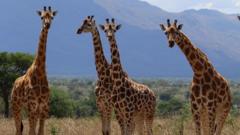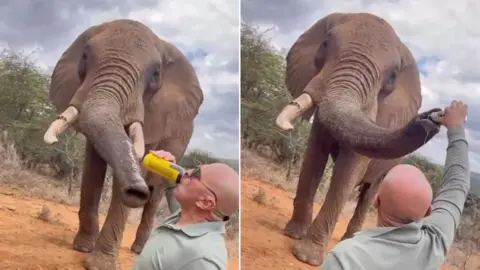Scientists utilized skull size and head shape variations to assess genetic diversity among giraffes. The assessment revealed that geographical barriers such as deserts, rivers, and valleys have led to separate evolutionary paths for these animals. Among the recognized species is the Southern giraffe, native to regions including southern Botswana and Namibia, which evolved separately due to rivers and rainforests acting as barriers.
The Reticulated giraffe inhabits savannas and woodland areas of Kenya, Somalia, and Ethiopia, with geographical features like the Tana river contributing to its classification as a separate species. The Northern giraffe, found in western Ethiopia and parts of Uganda, also exhibits distinct migration patterns shaped by its environment, differentiating it from the rest. Lastly, the Masai giraffe, known for its unique leaf-patterned coat, resides in Kenya, Tanzania, and Uganda, further emphasizing the rich biodiversity among giraffe populations.
Michael Brown, co-author of the report, notes the importance of these classifications for conservation efforts, as understanding genetic differences plays a crucial role in effective management and protection strategies. Previously categorized as vulnerable, the IUCN plans to reassess the conservation status of the newly identified species, highlighting the urgency for protective measures in order to preserve these iconic animals.
The Reticulated giraffe inhabits savannas and woodland areas of Kenya, Somalia, and Ethiopia, with geographical features like the Tana river contributing to its classification as a separate species. The Northern giraffe, found in western Ethiopia and parts of Uganda, also exhibits distinct migration patterns shaped by its environment, differentiating it from the rest. Lastly, the Masai giraffe, known for its unique leaf-patterned coat, resides in Kenya, Tanzania, and Uganda, further emphasizing the rich biodiversity among giraffe populations.
Michael Brown, co-author of the report, notes the importance of these classifications for conservation efforts, as understanding genetic differences plays a crucial role in effective management and protection strategies. Previously categorized as vulnerable, the IUCN plans to reassess the conservation status of the newly identified species, highlighting the urgency for protective measures in order to preserve these iconic animals.






















